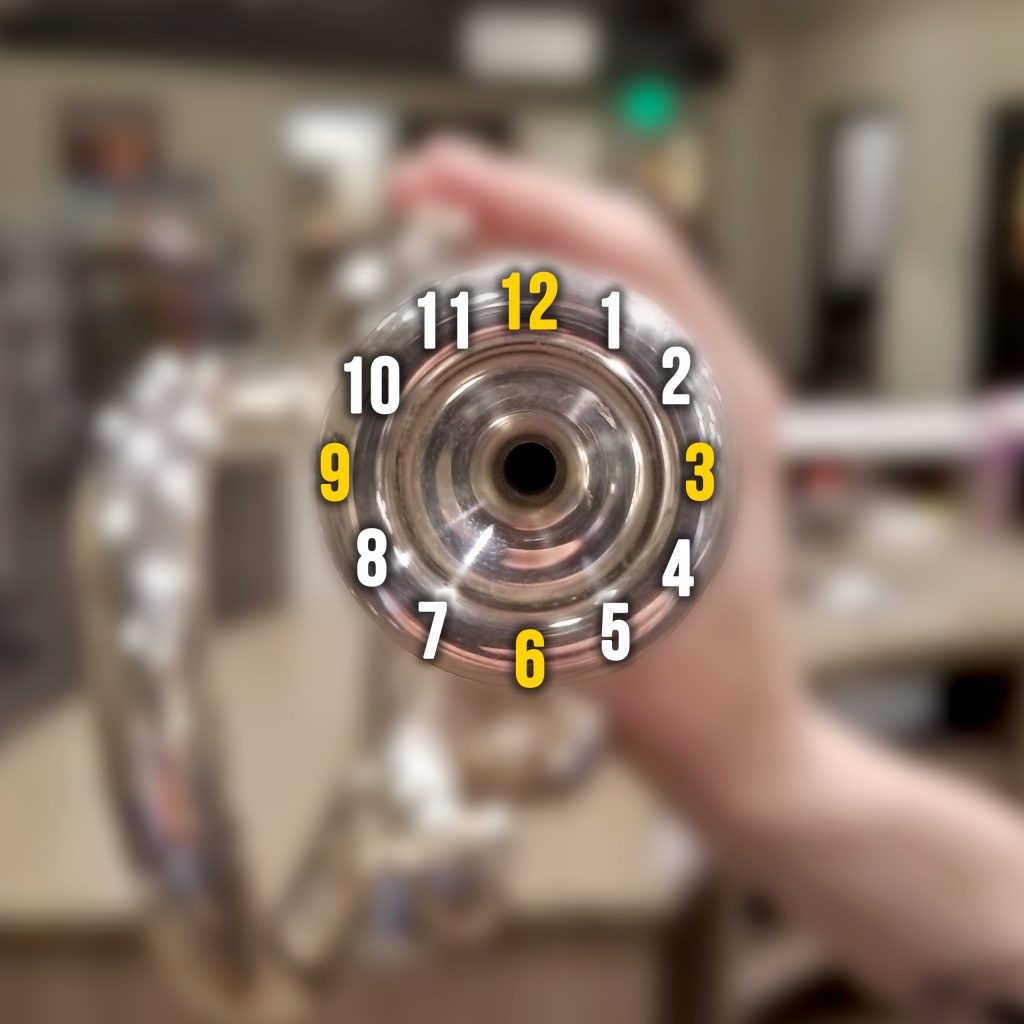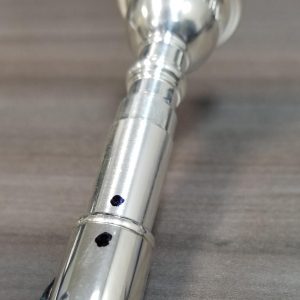Mouthpiece Clocking: Voodoo Magic or Real Science?
As a brass player, there are naturally good days and bad days. Days where the instrument sings effortlessly, and days where you want nothing more than to touchdown spike your instrument into the pavement. What if I said that this issue could partially be within your control without changing the way you play?
Following my previous post, “Valve Guards, and Hair Ties, and BERPS… OH MY!”, on the little things that can have a significant impact on the sound of your trumpet, I thought this would be a good opportunity to discuss something that seems to be regarded as “voodoo magic” within the brass community. Let’s look into the ideas and science behind clocking your mouthpiece!
Mouthpiece clocking is a term that gets thrown around, but is often dismissed and pushed to the side as something that ‘doesn’t really do anything’. I would argue that this is a crucial, dare I say mandatory process that every brass player should engage in.
The basic principle behind clocking your mouthpiece is that the orientation in which you insert your mouthpiece has an effect on how the instrument responds, feels, and sounds. Here’s how you can test this idea either on your own. Imagine your mouthpiece having the actual indications of a clock (1-12) engraved around the rim. First, insert the mouthpiece in the standard orientation as you would read a clock with 12 on top, 3 on the right, 6 on bottom, 9 on the left. Simply play a basic excerpt, scale, or exercise to establish a baseline for this test. Now, rotate the mouthpiece exactly one-quarter turn clockwise. With the imaginary 9 now on top, play the exact same thing and continue this experiment until you have completed one full cycle around the mouthpiece.
Odds are, there is one position that feels and sounds noticeably better than the others. Why is this happening? Glad you asked!
Per my previous post, brass instruments are highly sensitive to small changes. The effects of said changes are exponentially magnified the closer they get to the player’s face, making the mouthpiece a critical accessory to the instrument that is susceptible to minor imperfections. One would assume that a mouthpiece that is being manufactured on a CNC lathe will be perfectly symmetrical and have no variations. Unfortunately, no mouthpiece is going to be 100% perfect in its dimensions, nor will the instrument. For this reason, there will be a certain point of alignment between any brass instrument and mouthpiece combination where the player can hear and feel a noticeable sweet spot.
Once you have determined a specific sweet spot, I would find a way to indicate that setup on the mouthpiece/instrument combo. Something as simple as using a permanent marker to put a dot on the shank of the mouthpiece and the instrument’s receiver would do just fine to ensure that you are setting yourself up for better success and less frustration!
Are you still going to have good and bad days? Yes! That is just part of the adversity we have to overcome as brass players. Clocking your mouthpiece is just one small piece of the puzzle that you have control over, and could potentially lead to outstanding results.



No Comments